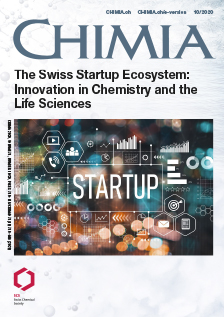The Vitamin C Analogue 2-O-β-D-Glucopyranosyl-L-ascorbic Acid in Rhizomes, Stems and Leaves of Lycium barbarum
FH-HES Universities of Applied Sciences
DOI:
https://doi.org/10.2533/chimia.2020.828PMID:
33115572Keywords:
Ascorbic acid, Ascorbic acid analogue, 2-o-β-d-glucopyranosyl-l-ascorbic, Goji, Lycium barbarumAbstract
Awareness of health benefits of goji berries coming from their bioactive compounds, mostly antioxidants like ascorbic acid, has grown. Recently, an ascorbic acid analogue from goji berries, the 2-O-β-D-glucopyranosyl-L-ascorbic acid has been reported. In rats, the analogue is absorbed intact and in the form of free vitamin C and consequently has been proposed as a provitamin C. Synthesis of the analogue is demanding and laborious and therefore reliable natural sources are searched. Knowledge concerning the analogue's occurrence in other parts of goji plant is lacking. The aim of this study was to evaluate the contents of 2-O-β-D-glucopyranosyl-L-ascorbic acid in rhizomes, stems and leaves from Lycium barbarum. Rhizomes, stems and leaveswere extracted and the content of 2-O-β-D-glucopyranosyl-L-ascorbic acid and non glucosylated, free ascorbic acid was determined by HPLC-DAD. 2-O-β-D-glucopyranosyl-L-ascorbic acid was found in all goji plant tissues investigated. Based on dry weight, 3.34 mg/100 g were found in the leaves, 4.05 mg/100 g in the stems and up to 12.6 mg/100 g in the rhizomes. Nevertheless, the analogue content in goji berries is much higher (40 to 280 mg/100 g dry weight). The present study confirmed the presence of 2-O-β-D-glucopyranosyl-L-ascorbic acid in rhizomes, stems and leaves of Lycium barbarum. However, their content compared to goji berries is considerably lower.
Downloads
Published
Issue
Section
Categories
License
Copyright (c) 2020 Swiss Chemical Society

This work is licensed under a Creative Commons Attribution-NonCommercial 4.0 International License.







